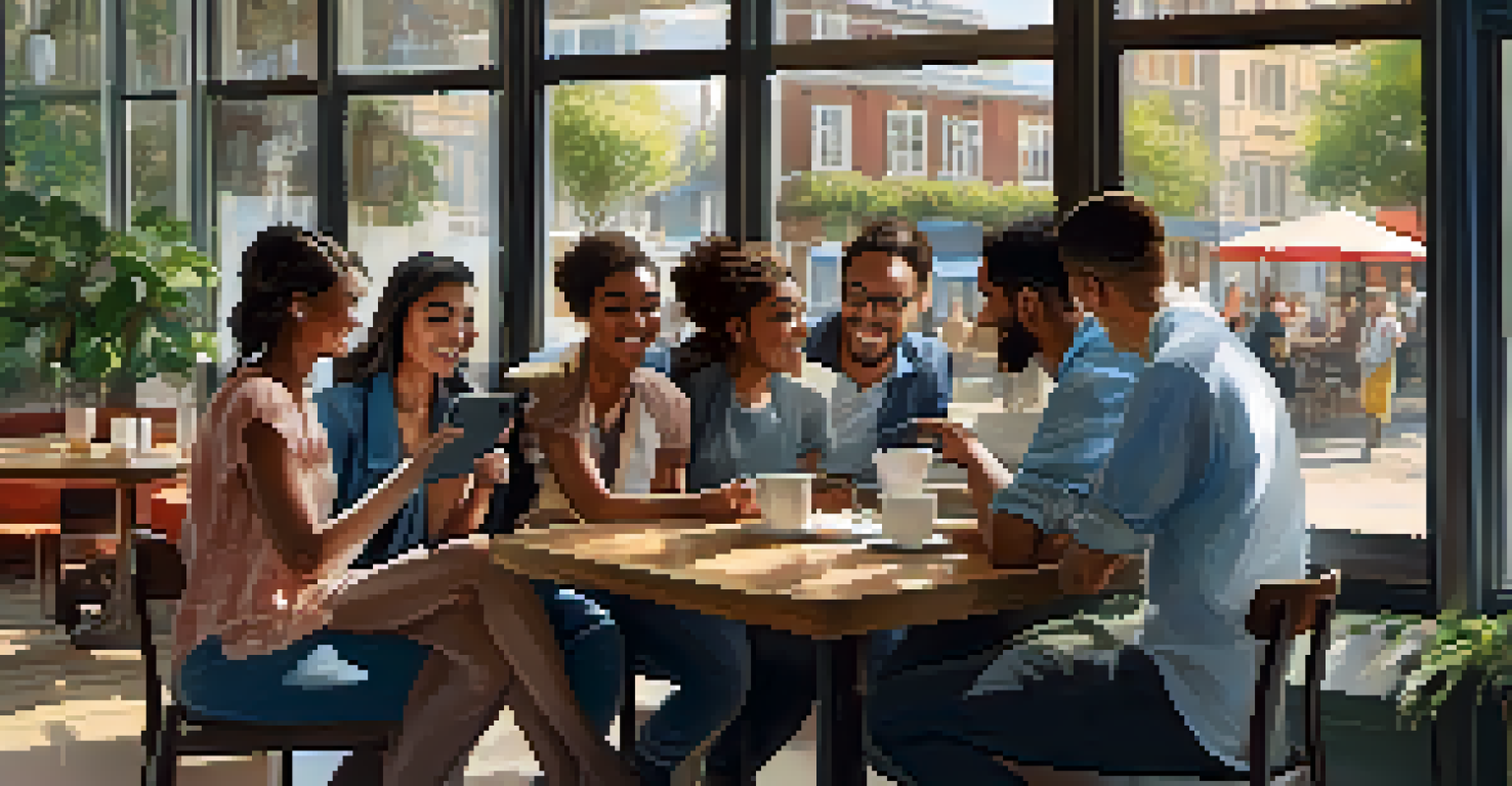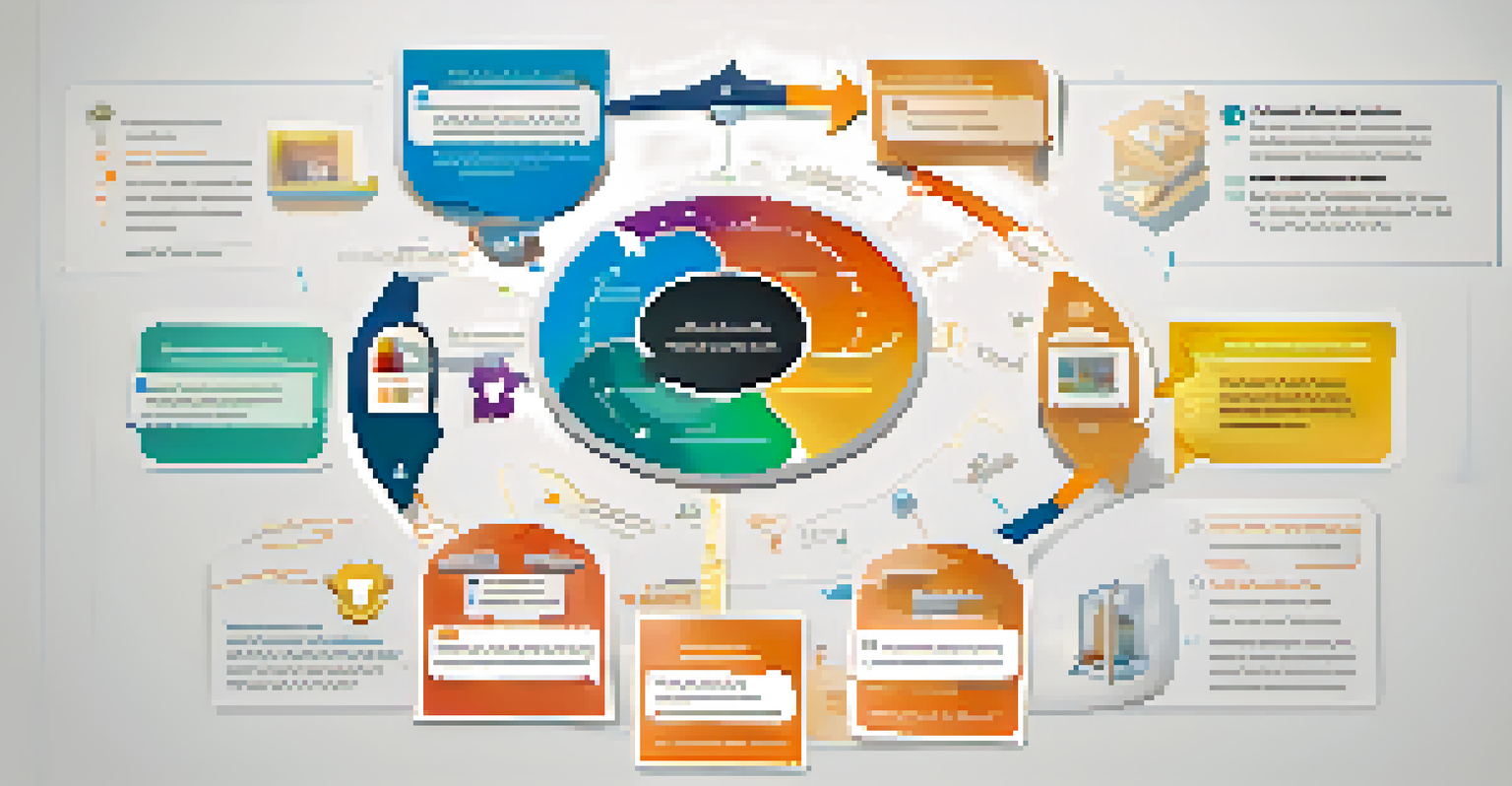The Importance of User Feedback in Virtual Tour Design

Understanding the Role of User Feedback in Design
User feedback is crucial in virtual tour design as it provides insights into how users engage with the experience. By gathering direct opinions from users, designers can pinpoint what aspects of the tour resonate and what elements may need improvement. This iterative process ensures that the virtual tour meets the needs and preferences of its audience, making it more engaging and valuable.
Design is not just what it looks like and feels like. Design is how it works.
Imagine planning a trip based solely on your own preferences without considering what other travelers enjoy. You might miss out on hidden gems or overlook common frustrations. Similarly, user feedback acts as a compass, guiding designers to create virtual tours that cater to a wider audience, enhancing overall satisfaction.
Ultimately, incorporating user feedback transforms a good virtual tour into an exceptional experience. It allows designers to understand user behavior, preferences, and expectations, ensuring that the final product is not only visually appealing but also user-friendly and immersive.
Collecting Feedback: Methods and Tools
There are numerous ways to collect user feedback on virtual tours, ranging from surveys to interactive polls. Online platforms can facilitate these methods, allowing users to share their thoughts in a comfortable environment. For example, after completing a virtual tour, users might be prompted to fill out a quick survey about their experience, giving designers valuable information.

Additionally, leveraging social media can provide real-time insights. Users often share their experiences on platforms like Twitter or Instagram, allowing designers to gauge reactions without formal surveys. This organic feedback can highlight areas of success and reveal opportunities for improvement more spontaneously.
Moreover, tools like heat maps and user session recordings can provide quantitative data on how users navigate the tour. By combining qualitative feedback with quantitative data, designers can develop a comprehensive understanding of user behavior, leading to informed design decisions.
The Benefits of User-Centric Design
Implementing user feedback leads to a more user-centric design, which is a significant advantage in any project. When users feel heard and valued, they are more likely to engage with the virtual tour and recommend it to others. This sense of ownership can foster a community around the experience, further enhancing its appeal.
The best designs are those that are driven by user needs and feedback.
Consider a restaurant that regularly seeks customer feedback; they are likely to adjust their menu based on popular demand. In a similar vein, virtual tour designers who actively incorporate user suggestions can create a product that is not only enjoyable but also relevant and timely.
Furthermore, user-centric design can lead to increased retention rates. When users find a virtual tour intuitive and tailored to their needs, they are more likely to return for future experiences, ultimately contributing to greater success for the business or organization behind the tour.
Iterative Design Process: Continuous Improvement
The design process for virtual tours should be iterative, meaning it involves continuous cycles of feedback and improvement. After initial launch, designers should remain open to ongoing user feedback to make necessary adjustments. This continuous improvement can elevate the quality of the virtual tour over time.
Think of it like tuning a musical instrument; you may start with a decent sound, but without regular adjustments, it can quickly go out of tune. Similarly, a virtual tour can lose its effectiveness if it doesn't evolve based on user experiences and feedback.
By fostering a culture of feedback, designers can keep the virtual tour fresh and engaging. Each iteration not only refines the experience but also demonstrates to users that their opinions genuinely matter, reinforcing their connection to the brand.
Measuring the Impact of User Feedback
Once feedback has been collected and changes implemented, it’s essential to measure the impact of those changes. Metrics such as user engagement, completion rates, and overall satisfaction can provide insight into how effective the iterations have been. This analysis helps designers understand if the modifications resonate with users.
For example, if a specific feature was added based on user feedback and engagement metrics increase, it’s a strong indicator that the change was beneficial. Conversely, if there’s no noticeable improvement, it may be time to explore different strategies or gather more user insights.
Ultimately, measuring the impact of user feedback not only validates design decisions but also informs future projects. It establishes a feedback loop that enhances the overall design process, ensuring that user needs are consistently prioritized.
Case Studies: Successful User Feedback Integration
Looking at successful case studies can provide valuable insights into the power of user feedback in virtual tour design. For instance, a well-known museum implemented user surveys after their virtual exhibitions, leading to significant changes in their layout and content. The result was a more engaging and interactive experience that increased visitor satisfaction.
Another example is a real estate company that redesigned its virtual property tours based on feedback from prospective buyers. By addressing concerns about navigation and content clarity, they saw a marked increase in interest and inquiries, showcasing how user feedback can directly impact business success.
These case studies illustrate that integrating user feedback is not just beneficial; it’s essential. They serve as reminders that when designers listen to their audience, the results can be transformative.
Future Trends in User Feedback for Virtual Tours
As technology continues to evolve, so too will the methods for collecting user feedback. Emerging tools such as virtual reality (VR) analytics and artificial intelligence (AI) are paving the way for more sophisticated feedback mechanisms. For example, AI can analyze user interactions in real-time, providing immediate insights into user behavior.
Additionally, with the rise of immersive experiences, feedback collection could become more interactive. Imagine users responding to prompts within the virtual tour itself, allowing for a seamless integration of feedback without disrupting their experience.

Looking ahead, the future of user feedback in virtual tour design promises to be even more dynamic and engaging. As designers embrace these innovations, they will be better equipped to create tours that not only meet but exceed user expectations.